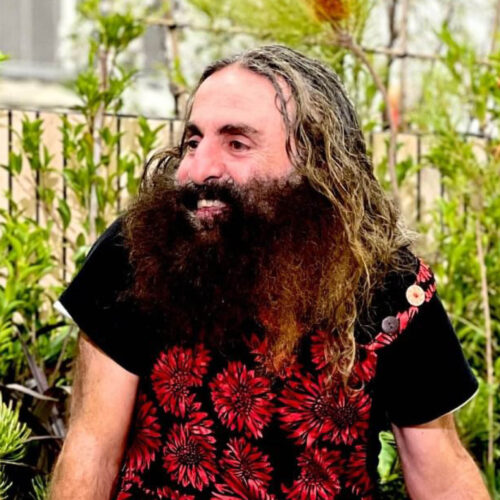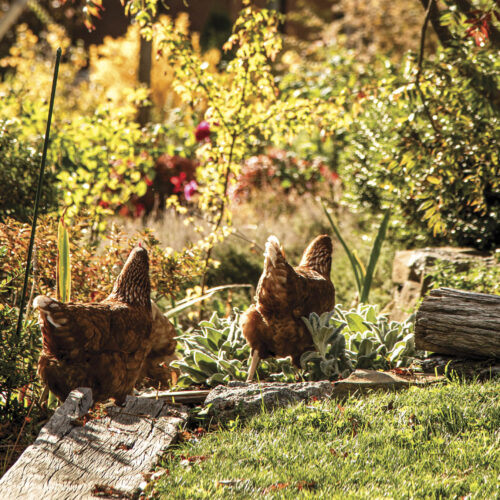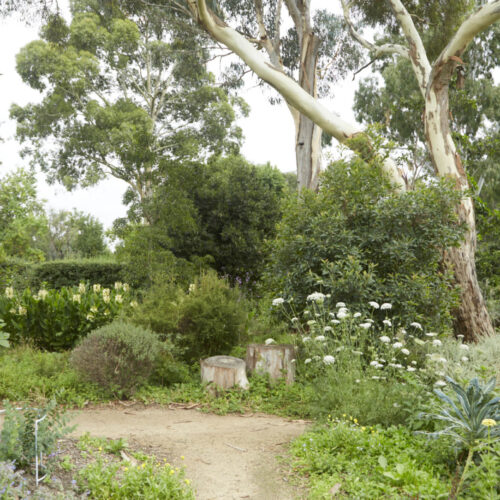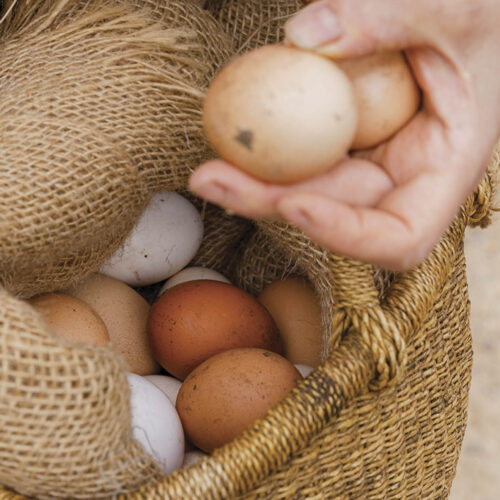Tassie Tales
2010-11-04T05:29:59+11:00
We catch up with LINDA COCKBURN and family on their quest for a self-sufficient lifestyle on the Apple Isle. Their owner-built house – being made without the use of concrete, PVC or chemical finishes – is progressing well.
Linda and partner Trev are using locally-sourced materials such as clay, straw bales and timber. The latter is 400-year-old celery top pine otherwise destined for firewood. In their ‘spare time’ they’ve been making camembert cheese, planting raspberries and dealing with wayward ducks.
Rendered mud walls look great; their soft curves catch the light, although also every flaw. While not exactly the labour of Sisyphus (the walls tend not to roll downhill again), it has been arduous.
The render is applied in four distinct layers: the slip coat, a thick-shake consistency mix of clay and water made up in large plastic bins with a drill and a paint stirrer attachment; the scratch coat, a centimetre-thick layer that defines the topography of the wall; the bulk coat, up to four centimetres thick; and the finish coat, which seals and irons out any little imperfections. Theoretically.
Straw bale walls don’t just look good – they’re 45cm thick when rendered, and create a super-insulated wall from one of the most renewable building materials. They can be regrown in nine months, whereas it would take timber at least 30 years. They’re also non-toxic, maintain healthy levels of humidity in the home and perform well in bushfires. At the end of the house’s lifetime they are also compostable. That’s not to say the house won’t last; there are straw bale houses over 100 years old in Australia, and clay houses around the world many hundreds of years old.
Helping hands
We’ve been lucky enough to have people volunteer to help out, with friends, family and even backpackers turning up to have a go. The completed thickness of the render is 5cm inside and out, a not inconsiderable tonnage. It took me five days to do the thick coat of one average size room (two walls) – about 2.5 metres a day. The soles of my feet are permanently yellow, my old work jeans no longer blue – although sometimes I get a little blue when I look at how much further there is to go.
A $27,000 quote for windows had us scratching our heads. It was going to be one of the few times we outsourced labour, but we just couldn’t bring ourselves to do it. We’ve set ourselves the hard task of building a house for under $80,000 and we’d been doing well. We also wanted to use local timber, but commercially available windows were mostly American Western Red Cedar, which, while durable, are also very flammable.
We invested $2000 in additional hardware. According to my partner Trev, whenever he takes on a new job and saves us money it’s a good opportunity to tool up. We now have a tool that makes large dowel joints incredibly easily and a jointer, or buzzer. Trev has taught himself rudimentary joinery and has almost finished the windows, saving us $20,000. And while it’s postponed the move-in date (again), it was definitely worth the wait. They are things of beauty.
The Camembert challenge
Trev has largely taken over the cheese-making process and we’ve tried Camembert again. Our goats Daisy and Bella produce enough milk for our daily use, plus a surplus of around 12L a week. We make three 500gm Camemberts a week and have also been making Caerphilly, Romano, fetta and mozzarella.
Temperature is all-important in cheese-making, right from pasteurising the milk, keeping it at 61°C for half-an-hour, or 68°C for one minute, then cooling it and adding cultures, mould spores and rennet to coagulate the milk. There’s a lot of clock-watching, periodic stirring, turning or heating of curds and then pouring them into hoops which must be inverted at pre-set intervals. After draining overnight, the cheeses are brined, dried and stored. In Queensland (where we used to live) we could never keep the cheeses at the right temperature for the ripening process, but a Tasmanian winter is perfect.
Raspberries rule
We’ve planted two hundred Chilliwack and Lloyd George raspberry canes – a fair increase on the 40 we had previously. Raspberry season entices even our son Caleb into the garden. However, sparrows are also lured by the juicy fruit, so we’re planting bird-susceptible plants in one place and plan to net the entire area.
The fruit will be turned into cordial, jam, fruit salads and sorbets, with excess being bartered with friends. However, when even the dog’s happy to eat them straight off the bush, there may not be that much to spare. Turning over the earth along three 15-metre rows was of interest to an army of blue and red wrens and robins; the sweet little insectivores would watch from every fence post and branch then swoop down and grab worms and curl grubs.
Flying solar
On a trip back to Queensland we visited our old house, where we had made an attempt to go six months without spending a dollar. We were dismayed to find the solar panels were no longer connected. On the day of our return to Tasmania, we heard of the solar rebate scheme and promptly filled out the paperwork. We now have a 1.1kWh system on our roof with scope to add to it in the future.
Once in the house our power use will be restricted to lighting, various CRT/LCD monitors and the fridge, so we should be able to keep it at a single digit daily usage. Energy from a sustainable wood supply will fuel the slow combustion stove, which will heat the house, cook our food and back up the solar hot water.
Slug-a-duck
We had a slug plague, which I thought to resolve organically, so we bought a duck of unknown provenance. I felt sorry for the poor thing and found it a friend; now we have a duck glut. Glut being the operative word… the gluttons ate all the asparagus before burrowing their beaks under the New Zealand yams and tossing those down too. Last year I had a bathtub full of yams – this year a 10-L bucket. I’m not impressed. (Trev, no fan of the duck, is yelling, “I told you so!” at the top of his lungs). The ducks, though definitely more personable than the chooks, have had their death sentence read in the form of frequent recitation of duck recipes. But we’re not up to the act, and continue to change their bath water, move their housing and entice them to stay in the orchard area with high fences.
It was a belated discovery that Muscovies are less inclined to eat slugs than other varieties. However, being purveyors of huge quantities of duck manure, they may still have a place in the scheme of things.





